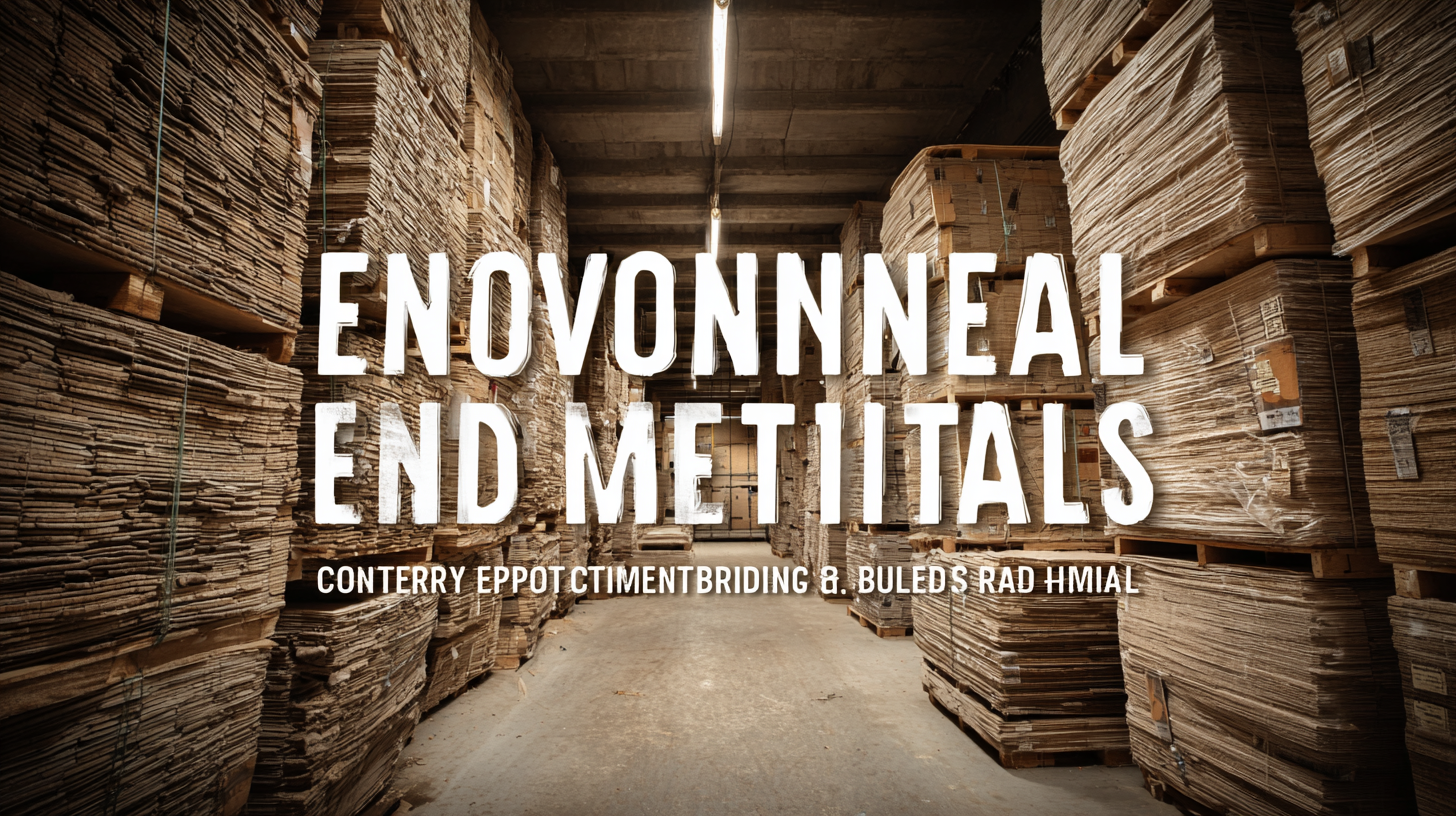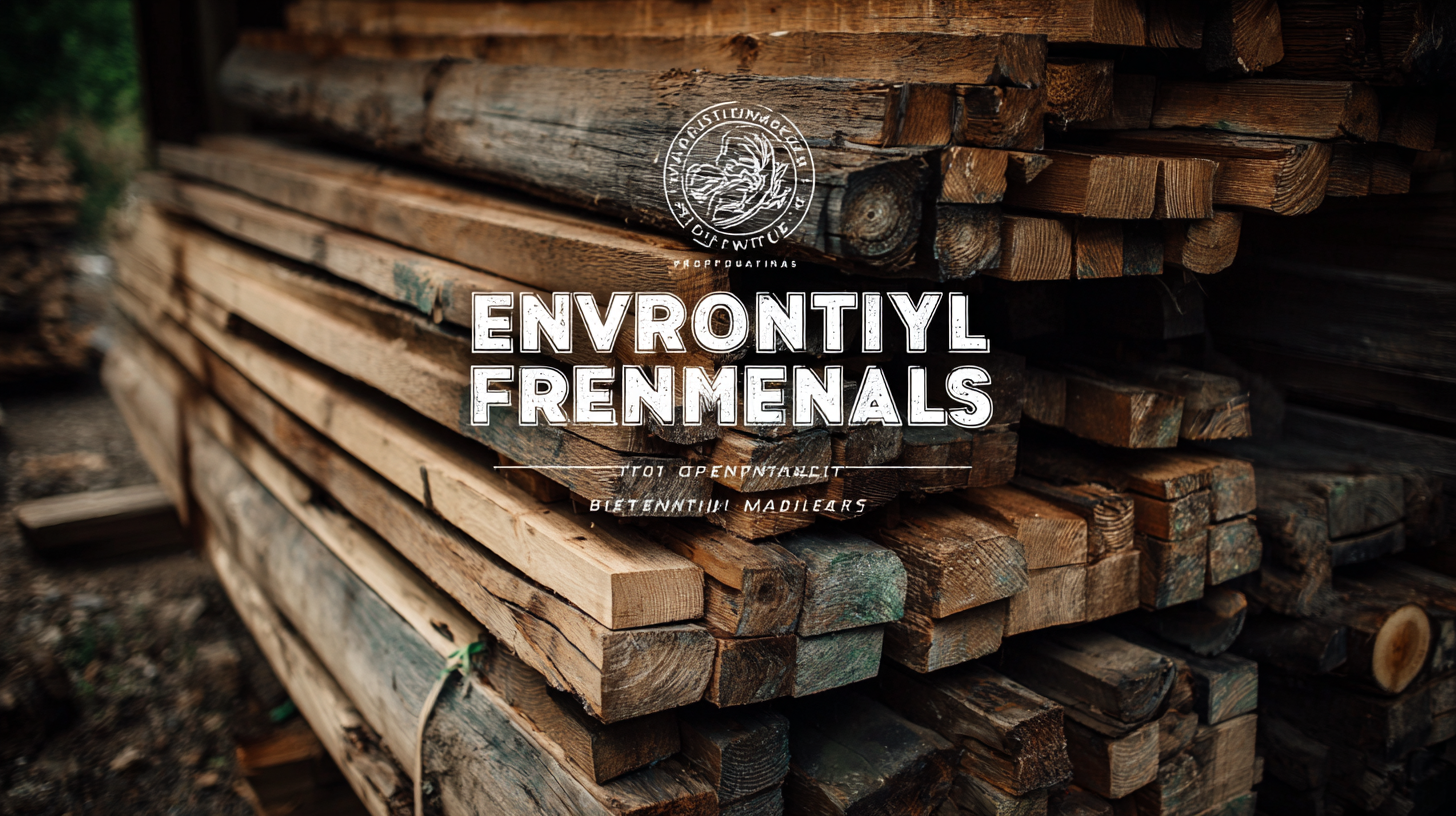Natural beauty for your favorite space
How to Navigate Import Export Certifications for Best Environmentally Friendly Building Materials
In the construction industry, the demand for environmentally friendly building materials has surged, reflecting a growing commitment towards sustainable practices. According to a report by MarketsandMarkets, the global green building materials market is projected to reach $400 billion by 2027, growing at a compound annual growth rate (CAGR) of over 11%. As stakeholders increasingly prioritize eco-friendly options, navigating the complex landscape of import-export certifications has become crucial. Ensuring that materials comply with various standards not only enhances marketability but also fosters environmental responsibility.

This checklist serves as a comprehensive guide to help professionals streamline the certification process for environmentally friendly building materials, ultimately contributing to a greener construction future.
Understanding the Importance of Certifications in Eco-Friendly Building Materials
When it comes to constructing sustainable buildings, the importance of certifications for eco-friendly materials cannot be overstated. Certifications provide assurance that the materials used meet established environmental standards, contributing to the overall integrity and sustainability of building projects. They serve as a benchmark for quality and responsible sourcing, helping consumers and builders distinguish between truly green products and those that merely claim to be environmentally friendly.
Understanding the various certifications available is crucial for making informed decisions. Whether it’s LEED certification for sustainable construction practices or FSC certification for responsibly sourced wood products, each certification carries specific criteria that ensure compliance with environmental regulations. By choosing certified materials, builders not only support eco-friendly practices but also enhance the marketability of their properties, appealing to a growing segment of environmentally conscious consumers. In this way, certifications are not just bureaucratic hurdles; they represent a commitment to quality, responsibility, and the health of our planet.

Key Environmental Benefits of Sourcing Certified Import Export Materials
Sourcing certified import-export materials for building projects carries significant environmental benefits that extend beyond compliance. First and foremost, certified materials often meet rigorous sustainability standards, ensuring that they are sourced responsibly. This not only reduces deforestation and habitat destruction but also promotes the use of recycled materials, thus minimizing waste in an era where landfill space is increasingly at a premium. By opting for these environmentally friendly materials, builders contribute to the reduction of their carbon footprint and support a circular economy.
Moreover, utilizing certified materials can enhance energy efficiency in construction. Many such materials are designed to improve insulation and reduce energy consumption over a building's lifespan. This not only leads to lower energy bills for occupants but also aligns with global efforts to combat climate change by decreasing greenhouse gas emissions. Additionally, sourcing certified materials often fosters a greater sense of accountability among suppliers, which encourages better practices throughout the supply chain and leads to the promotion of eco-friendly innovations in the industry. By focusing on certified import-export materials, builders and developers can significantly impact both their immediate environment and broader ecological goals.
How to Navigate Import Export Certifications for Best Environmentally Friendly Building Materials - Key Environmental Benefits of Sourcing Certified Import Export Materials
| Material Type | Certification Type | Environmental Benefit | Source Country | Recyclability |
|---|---|---|---|---|
| Bamboo Flooring | FSC Certified | Sustainable resource, reduces deforestation | China | Yes |
| Recycled Steel | LEED Certified | Reduces landfill waste and energy consumption | USA | Yes |
| Cork Insulation | CFC Free Certified | Natural thermal resistance, renewably harvested | Portugal | Yes |
| Reclaimed Wood | Cradle to Cradle Certified | Reduces waste and resource extraction | Various | Yes |
| Solar Panels | IEC Certified | Generates renewable energy, reduces fossil fuel use | Germany | Yes |
Impact of Sustainable Building Materials on Energy Efficiency and Cost Savings
Sustainable building materials are increasingly becoming a focal point in the construction industry, not just for their environmental benefits, but also for their impressive contributions to energy efficiency and cost savings. These materials, often derived from renewable resources or recycled content, are designed to minimize waste and maximize energy performance. For instance, the use of insulated concrete forms (ICFs) and bamboo can significantly reduce the energy needed for heating and cooling, translating into lower utility bills for building occupants.
In addition to energy efficiency, sustainable materials can yield substantial long-term financial savings. Although the initial investment might be higher, the durability and reduced maintenance costs associated with eco-friendly products lead to a favorable return on investment. Furthermore, many governments offer incentives for utilizing green materials, such as tax credits or grants, further enhancing the financial viability of sustainable construction. Making informed choices about building materials not only leads to healthier living spaces but also supports a resilient economy in the long run.
Best Practices for Navigating Import Export Regulations for Green Materials
Navigating import and export regulations for environmentally friendly building materials can be a complex process, but understanding best practices can simplify it significantly. First, it's critical to stay informed about the specific regulations and standards that govern green materials in both the exporting and importing countries. Regulatory frameworks often include certifications for sustainability, such as LEED or FSC, which can guide you in ensuring that your materials comply with both local and international guidelines.

Another vital practice involves collaborating with suppliers and logistics companies that have experience with green materials. They can provide invaluable insights into the nuances of compliance, helping you avoid potential pitfalls in the certification process. Additionally, incorporating technology, like software that tracks regulatory changes, can streamline your operations, ensuring that you are always up to date on the requirements. Implementing these strategies not only smooths the path for compliance but also reinforces your commitment to sustainability in building practices.
Case Studies: Successful Implementations of Eco-Certified Building Projects
When it comes to eco-certified building materials, real-world case studies serve as powerful illustrations of effective strategies and practices. For instance, the recent developments in Shenzhen's Energy Ecological Park highlight the successful implementation of zero-carbon building projects. This site not only showcases innovative designs but also emphasizes the importance of collaboration in achieving environmental goals, as seen in the cooperation between China and Switzerland in creating new green landmarks.
Tips for navigating the certification process include understanding the specific regulations and standards applicable in your region. Engaging with local authorities and industry groups can provide invaluable insights and resources. Additionally, learning from existing successful projects can offer practical examples and scalable solutions for your own initiatives.
In cities like Hangzhou, the exploration of community-based green development is reshaping the urban landscape. They exemplify how ecologically friendly practices can be integrated into the fabric of daily life, showing that sustainable building materials are more than just choices; they represent a movement towards a healthier environment. As these projects demonstrate, the commitment to sustainability not only benefits our planet but also enhances the quality of life within communities.
